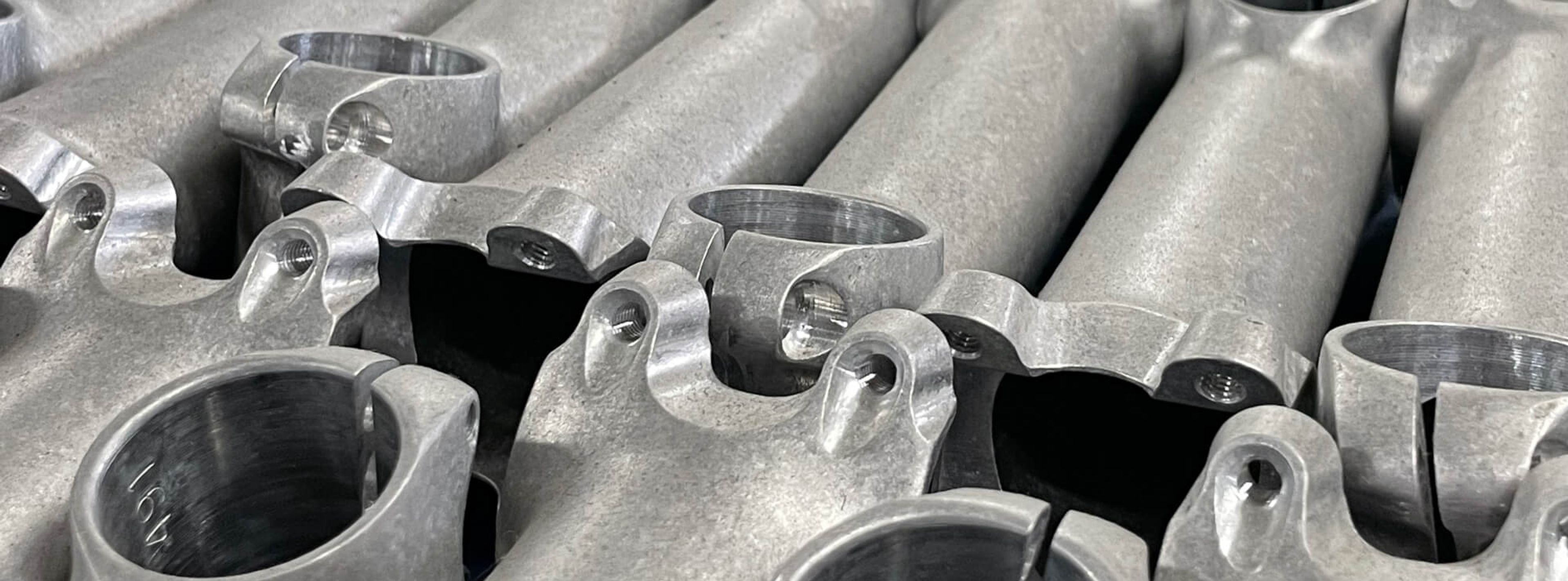3D Net Forging — One Forging to Rule Them All
The 3D Net Forging is process is integral in manufacturing the Ritchey stems and seat posts we all know and love so much - and this article explains everything about it.
Long ago, deep in the depths of Mount Doom, the dark lord Sauron developed a forging process that, while pure evil, yielded bicycle components with a seriously impressive strength-to-weight ratio. He called this new manufacturing marvel 3D net forging and set forth to conquer the world of free men only to be destroyed by Isildur and, later, a band of merry hobbits.
Ok, so maybe the actual origins of 3D net forging are slightly less sinister than all of that but hey, who’s to really say just how the one ring was created? In any case, 3D net forging is how we manufacture some of our bike parts. You may have seen that phrase while perusing the Ritchey website and thought…
What is 3D Net Forging?
Generally speaking, forged bicycle components fall into two categories: those produced using a 2D forging process and those made using 3D forging. In 2D forging, force is applied to a piece of aluminum from either the top and bottom or the sides. This force shapes the metal into the desired form. While 2D net forging works well for solid products, it’s not ideal for hollow components like stems and seat posts. For that, we turn to 3D net forging.
3D net forging adds a third dimension into the mix — one that’s internal and leaves us with a final form that has the desired external shape and is hollow. This process is integral in manufacturing the Ritchey stems and seat posts we all know and love so much, but it’s also widely used in automotive and motorsports manufacturing.
It all starts with a solid chunk of aluminum. That material gets put into a die that closes in from the sides to create the external shape of the final product. As the sides close in on the material, a mandrel presses into it. The more that the mandrel pushes in, the excess material gets squeezed out to the sides and in the opposite direction to form the rest of the shape.
To put into a context that we’ve all probably experienced firsthand, imagine a ball of Play-Doh. If you took that ball and squished it into a shot glass with your finger, it would form the shape of the bottom of the glass while also rising up the sides. If you took it out of the glass, you’d be left with a Play-Doh form of the glass.
Now that’s obviously a very simplified explanation of the 3D net forging process. And the force applied to our aluminum blocks is measured in the tens or even hundreds of tons — slightly more than your finger can dish out.
WHAT ARE THE BENEFITS OF 3D NET FORGING?
3D net forging is most commonly used in the bike world when manufacturing stems and seatposts, particularly those on the higher end of the spectrum. And for a good reason! Parts produced using this process tend to perform better and have a higher strength-to-weight ratio when compared to parts made using 2D forging.
Since the seatpost and stem are high-force areas of the bike, that additional strength is key to the component's overall performance. That extra strength is also why many car and motorsport manufacturers turn to 3D net forging.
Generally, 3D net forged parts require less machining time post-forge, which results in a thinner wall thickness. Additionally, forging produces a metal grain structure that is more uniform and directional than that of a CNC-machined part, so the parts are not only stronger, but they look better too.
THE RITCHEY DIFFERENCE
Many industries have used 3D net forging for quite a while. But it wasn’t until 1999 when our own Tom Ritchey saw an opportunity to utilize the process in the cycling industry. The first cycling component ever manufactured using 3D net forging was the Ritchey Pro threadless stem. Up until that point, stems were 2D forged and very, very heavy. The rest of the industry quickly took note of the lighter, stronger Ritchey stem and other companies also began 3D net forging their stems the following year.
As with everything that we produce here at Ritchey, quality is of the utmost importance. With that in mind, we work very closely with our forging supplier to maximize the benefits that the 3D net forging process passes onto the final piece. While we hold the exact steps of the process close to our chest, that collaboration with our suppliers helps us consistently push the envelope and produce world-class stems and seat posts.
Join now for engaging stories, exclusive offers and product news delivered right to your inbox.


